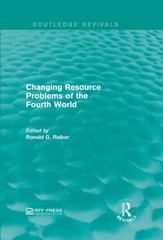Question
Following are the behavioural equations of an economy Consumption expenditure= 10+0.5Y Investment=270-20i Government expenditure=200 Imports=400 Exports=200 Md=0.4Y-80i Ms=32 Y=G+I+C a.Find out the equilibrium income and
Following are the behavioural equations of an economy
Consumption expenditure= 10+0.5Y
Investment=270-20i
Government expenditure=200
Imports=400
Exports=200
Md=0.4Y-80i Ms=32
Y=G+I+C
a.Find out the equilibrium income and interest rate in this economy
b. How would the equilibrium income and interest rate change with an increase in government expenditure by INR 100?
2. Read the following news clip and answer the questions that follow: Foreign direct investment (FDI) equity inflows into India crossed the USD 500 billion milestone during April 2000 to September 2020 period, firmly establishing the country's credentials as a safe and key investment destination in the world. Source:
https://economictimes.indiatimes.com/markets/stocks/news/fdi-equity-inflows-into-india-cross-500-billionmilestone/articleshow/79589698.cms?utm_source=contentofinterest&utm_medium=text&utm_campaign=cppst
a. What would be the impact of increased foreign reserves on strength of Indian currency? (2 points)
b. An increase in FDI has a pro and a con for the growth of Indian economy. Elaborate this statement (1+1=2 points)
State whether true or false (2+2+2+2= 8 points)
a. Under fixed exchange rate regime monetary policy is ineffective
b. Depreciation of domestic currency would lead to a rightward shift of the IS curve of that country
c. Increase in savings by households in their personal lockers at home would cause an increase in the money supply
d. An increase in Cash Reserve Ratio (CRR) by central bank would help increase money supply in an economy
Following are the hypothetical data of two countries:
Country Currency to Deposit Ratio Reserves to Deposit Ratio Pizza 0.5 0.2 Pasta 0.6 0.3
a. If we have total deposits of $1000 in a financial year in both the economies, which country would have greater money supply? (3 points)
b. How do you compare the implications of household behavior in both the economies on their creation of money supply? (3 points)
Step by Step Solution
There are 3 Steps involved in it
Step: 1

Get Instant Access to Expert-Tailored Solutions
See step-by-step solutions with expert insights and AI powered tools for academic success
Step: 2

Step: 3

Ace Your Homework with AI
Get the answers you need in no time with our AI-driven, step-by-step assistance
Get Started


